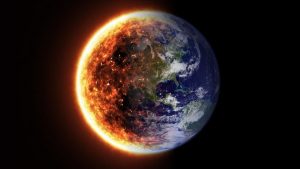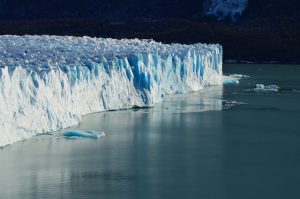The Antarctican continent hit a record high temperature last year, with the mercury hitting 18.3 degrees Celsius, the United Nations confirmed on Thursday.
The Earth’s average surface temperature has gone up by 1 degree Celsius since the 19th century, which led to a spike in the intensity of droughts, heatwaves and tropical cyclones.
However, the air over Antarctica has warmed more than twice that much, reported AFP.
A research station located in the city of Esperanza in Argentina recorded the temperature on the Antarctic Peninsula on February 6, 2020, according to the World Meteorological Organization, a subsidiary arm of the United Nations.
“Verification of this maximum temperature record is important because it helps us to build up a picture of the weather and climate in one of Earth’s final frontiers,” said WMO secretary-general Petteri Taalas.
“The Antarctic Peninsula is among the fastest-warming regions of the planet — almost 3 Celsius over the last 50 years.
“This new temperature record is therefore consistent with the climate change we are observing.”
Also Read: Activist Greta Thunberg slams leaders for climate crisis ‘role-playing’
The WMO rejected an even higher temperature reading of 20.75C (69.4F), reported on February 9 last year at a Brazilian automated permafrost monitoring station on the nearby Seymour Island, just off the peninsula which stretches north towards South America.
The previous verified record for the Antarctic continent — the mainland and its surrounding islands — was 17.5 Celsius (63.5F) recorded at Esperanza on March 24, 2015.
The record for the wider Antarctic region — everywhere south of 60 degrees latitude — is 19.8 Celsius(67.6F), taken on Signy Island on January 30, 1982.
In checking the two reported new temperature records, a WMO committee reviewed the weather situation on the peninsula at the time.
It found that a large high-pressure system created downslope winds producing significant local surface warming.
Past evaluations have shown that such conditions are conducive for producing record temperatures, the WMO said.
The experts looked at the instrumental set-ups and the data, finding no concerns at Esperanza.
However, an improvised radiation shield at the Brazilian station on Seymour Island led to a demonstrable thermal bias error for the permafrost monitor’s air temperature sensor, making its reading ineligible to be signed off as an official WMO weather observation.
WMO’s archive of weather and climate extremes will be added with the new record of Antarctic’s warming.
The archive includes the world’s highest and lowest temperatures, rainfall, heaviest hailstone, longest dry period, maximum gust of wind, longest lightning flash and weather-related mortalities.
The lowest temperature ever recorded on Earth was minus 89.2 Celsius (minus 128.6F) recorded at Vostok station in Antarctica on July 21, 1983.
Also Read: Main Antarctic ice shelf collapsing faster than projected, study says
The average measurement of temperature on the icy continent varies between -10 degrees Celsius to -60 degrees Celsius, between the coastal areas towards the north and the most interior points in the south.
“Even more so than the Arctic, the Antarctic is poorly covered in terms of continuous and sustained weather and climate observations and forecasts, even though both play an important role in driving climate and ocean patterns and in sea level rise,” said Taalas.
Recent research has shown that warming of two degrees Celsius could push the melting of ice sheets atop Greenland and the West Antarctic — with enough frozen water to lift oceans 13 metres (43 feet) — past a point of no return.
“This new record shows once again that climate change requires urgent measures,” said WMO first vice president Celeste Saulo, the head of Argentina’s national weather service.
“It is essential to continue strengthening the observing, forecasting and early warning systems to respond to the extreme events that take place more and more often due to global warming.”







